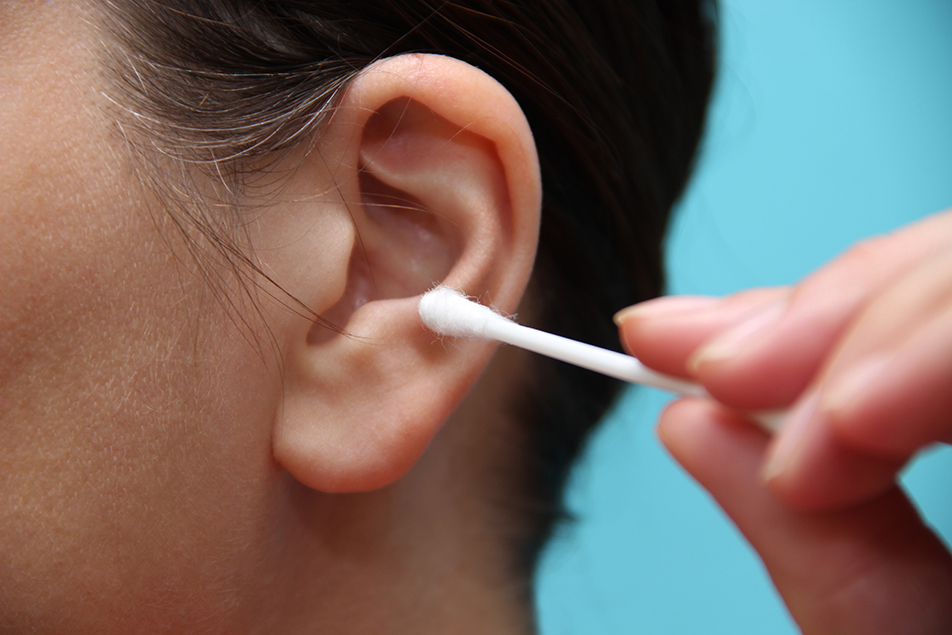
Should we use cotton swabs to remove earwax? When do we know if we have too much buildup? We asked Kristin Gerhardstein, MD, PPG – Family Medicine, to field all of the earwax questions you’ve been meaning to ask your doctor.
Q: What is earwax (cerumen) made of?
A: It is made of secretions from both sebaceous and ceruminous glands located in the outer portion of the ear canal. These secretions mix with flaked off skin and bacteria of normal skin to form cerumen.
Q: What is the purpose of earwax?
A: It acts as a protective covering of the ear canal, like a shield for the skin of the ear canal from water damage, infection, trauma and foreign bodies.
Q: Do I need to clean my earwax regularly?
A: No. Our bodies naturally eliminate excess cerumen from the ear canal. Using a cotton swab can push the earwax down deeper into the canal and cause an impaction to form; cotton swabs can also damage the ear drum.
Q: What is cerumen impaction?
A: Cerumen impaction is when the accumulation of cerumen causes bothersome symptoms and/or prevents a needed assessment of the ear canal.
Q: What causes cerumen impaction?
A: Obstructions can occur due to ear canal disease such as bony obstructions, swimmer’s ear, eczema, Lupus or Crohn’s disease. Obstructions can also occur due to a narrowing of the ear canal. Anatomic variations of the ear canal are common, and some can be tortuous (characterized by twists and turns) or narrow. Hearing aids and ear plugs can obstruct the canal and with time can contribute to cerumen build up. Lastly, as part of the aging process, the glands of the ear canal skin tend to atrophy, producing harder, less fluid cerumen that migrates much more slowly out of the ear canal.
Q: What are the symptoms of cerumen impaction?
A: Hearing loss, earache, ear fullness, itchiness, reflex cough, dizziness, tinnitus (ringing in the ears).
Q: When should I see my doctor if I think I have cerumen impaction?
A: Cerumen build up typically does not cause symptoms, however you should seek treatment if you have trouble hearing, have ear pain, are hear a ringing noise in the ear, or feel like the ear is blocked/plugged.
Q: What are some home remedies for earwax build up?
A: There are several safe options, including:
1. Make a 50/50 mixture of hydrogen peroxide and warm water. Use a bulb syringe to squirt the mixture into the ear canal and catch excess water with a large basin/bowl underneath the affected ear. This will help the earwax to bubble out.
2. Debrox® drops are an over-the-counter option. Place a few drops in the affected ear, place a cotton swab in the ear and tilt the head to the opposite side for a few minutes to let it soak in. You can use Debrox® drops for a maximum of four days.
3. Gel Colace® capsules can provide relief. Use nail clippers or sharp scissors to clip off the end of the capsule. Squirt the contents of one capsule into the affected ear canal; let rest in ear canal for 20-30 minutes prior to irrigating with warm water and hydrogen peroxide.
4. Mineral oil us another over-the-counter option that can be found in the constipation aisle. Sweet oil or baby oil can also be used 1-2 times per week. Wash the oil out while in the shower.
Note: Ear candling (lighting one end of a hallow candle and putting the other end in the ear) is NOT recommended because it does not work well and can cause injuries or burns.



